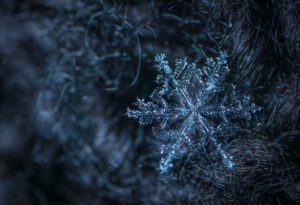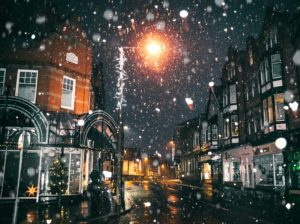When winter arrives, it is important to know how to teach our children important lessons about snow. What is it? What are some facts that are interesting to know?
Our children often ask us questions that need simple answers. When it comes to weather and snow, we can always introduce some scientific findings that will help children become more curious about things around them.
In Proverbs 22:6, the Bible shares: “Train up a child in the way he should go: and when he is old, he will not depart from it.”
When you answer questions that your child may have, new information helps develop their curiosity. You are encouraging them to explore and discover new things they might not have considered.
With that, let us help you answer some questions that your children may have.
How does snow develop?
For snow to develop, there must be pollen or dust in the air for the ice crystals to form around. The formation of a snowflake depends primarily on how cold the temperature is in order for a cold water droplet to freeze onto a pollen or dust particle in the sky.
When your child asks about the formation of snow, you can answer this way, in steps.
- The first step is when the weather is very cold.
- Second, the dust or pollen particles in the air cannot be seen by the naked eye.
- Third, once the water vapor freezes to the pollen or dust particle, an ice crystal forms similar to the ones in your kitchen freezer.
- Fourth, when the main ice crystal descends toward the ground, new ice crystals will be added to form a unique snowflake.
If your child is more into science, you can use more scientific terms for the water droplets. It has two Hydrogen atoms and one oxygen atom. These atoms would align and freeze together, which develops a hexagon shape.
Is a snowflake unique?
 When asked this question, you can always say yes, there are no two snowflakes that are alike. Water molecules build up and are added to each snowflake in a very unique way. Since the conditions in the air are not always constant, the look and shape of each snowflake will never be the same.
When asked this question, you can always say yes, there are no two snowflakes that are alike. Water molecules build up and are added to each snowflake in a very unique way. Since the conditions in the air are not always constant, the look and shape of each snowflake will never be the same.
This is a great characteristic of a snowflake that you can share with your child. Much like every single person, a snowflake is unique. It is created differently each time, much like a person.
Does a snowflake always have six unique sides?
The National Weather Service says that every flake tends to look unique, resembling everything from prisms and needles to the familiar lacy pattern that we often see in the snow. But while there can be ice pellets known as graupel or ice needles or cylinders, an actual snowflake always has six sides.
Children can study the wonders of snow with useful Unit Studies like “The Intricacies of Snow” that cover science, math, Bible study, history, vocabulary, geography, art, and activities from the publishers of Creation Illustrated.
Why is there no snow in the summer?
 This is a very curious question that children may ask. Why is it hot is the equivalent question of why is there no snow in the summer. You can answer this in a very scientific way or in a simple way.
This is a very curious question that children may ask. Why is it hot is the equivalent question of why is there no snow in the summer. You can answer this in a very scientific way or in a simple way.
You can say that snow tends to fall with the temperature. When it is cold, snow forms because there is water vapor in the air. The surface temperature can be as high as 50 degrees. As long as the environmental conditions are just right, you will see snow.
When it becomes very cold, there will be evaporation and melting and the environment will freeze which allows the snow to stick and remain for weeks or even months.
Is there a perfect temperature for snow?
There is no perfect temperature for snow to build up. Once the air temperature at ground level drops below about -10 degrees Fahrenheit (-20 degrees Celsius), snowfall becomes unlikely in most places.
Is Snow white like Snow White?
Curious children may ask: Why is snow white? The quick answer is that snow is not really white. Snow is translucent since it is made up of ice. You can prove this by putting some snow in a glass and letting it melt into clear water. Snow only appears white because the light is refracted and scattered to make snow look white.
How long does it take for snow to fall?
If you have a child who asks about when the snow will fall, you can tell them that when the environmental conditions are right. It could take about an hour for a snowflake to fall and reach the ground.
The largest snowflakes can reach up to 9 miles per hour before it falls to the ground while the normal ones have a speed of 1.5 miles per hour. Hence, scientists concluded that it would take an hour for snow to reach the ground.
Teach About Snow Through Unit Studies
 There are many ways that you can teach your children some specific things about snow. One of the ways is finding interesting videos on YouTube and sharing them with your children. You can also have fun sharing some facts face-to-face as snow falls.
There are many ways that you can teach your children some specific things about snow. One of the ways is finding interesting videos on YouTube and sharing them with your children. You can also have fun sharing some facts face-to-face as snow falls.
What is your best accompanying study guide for your children? We believe that it is Creation Illustrated’s Snow Unit Study. Based on its description, the Snow Unit Study from this publication is very uplifting and full of knowledge that will keep your child interested in the topic. The lessons include Reading, Educational Videos, Bible Study, Science, Arithmetic, Geography, Vocabulary & Spelling, Art, a Word Search Puzzle, and Other Fun Facts and Activities.
Your children can gain an understanding of snow, and you can also use this Unit Study to teach your children some very important life lessons.



